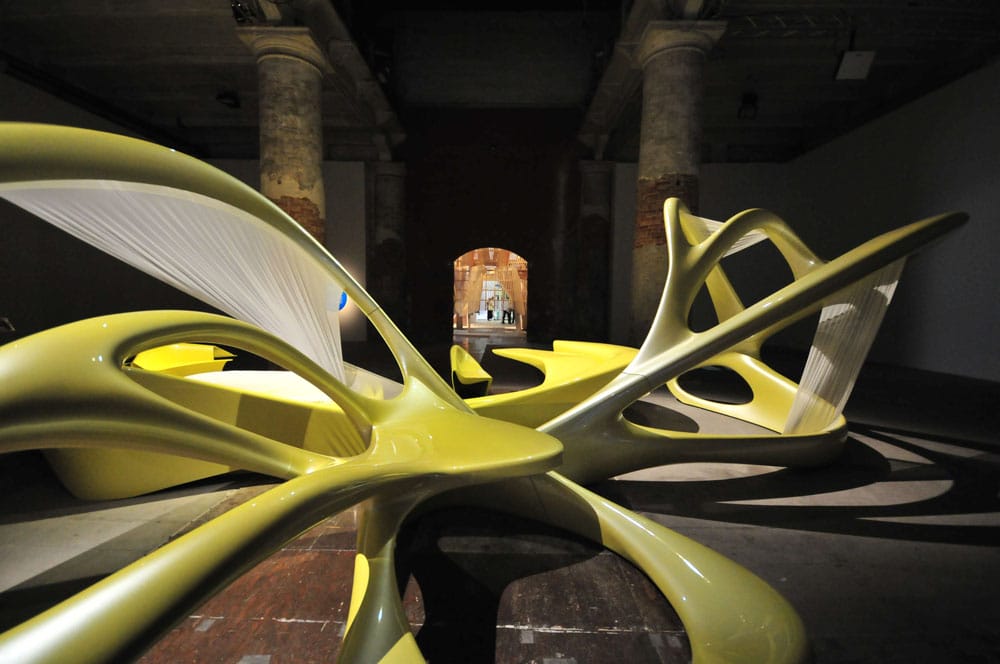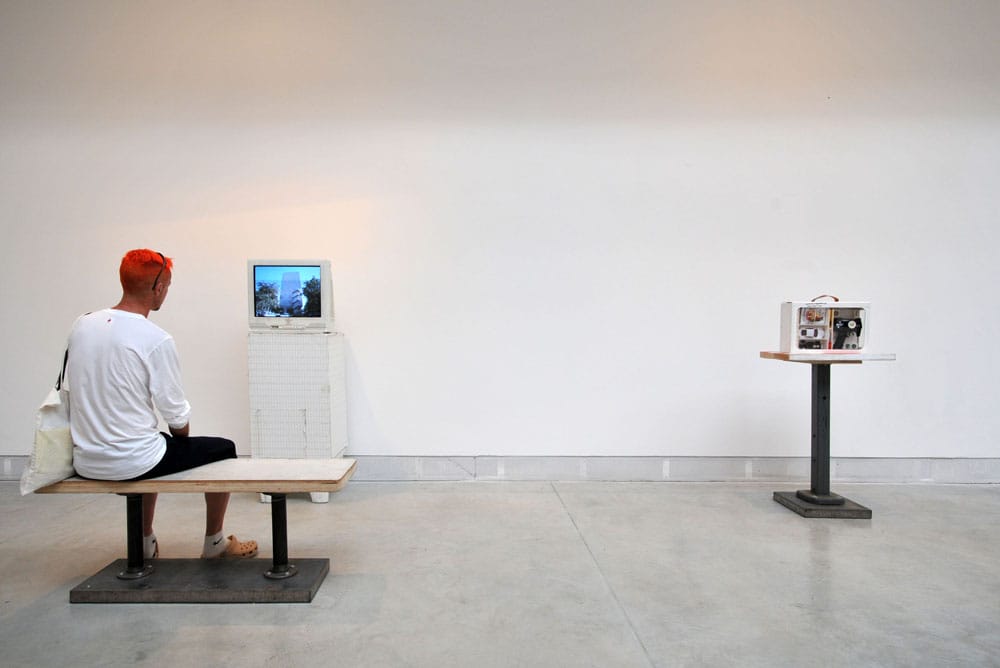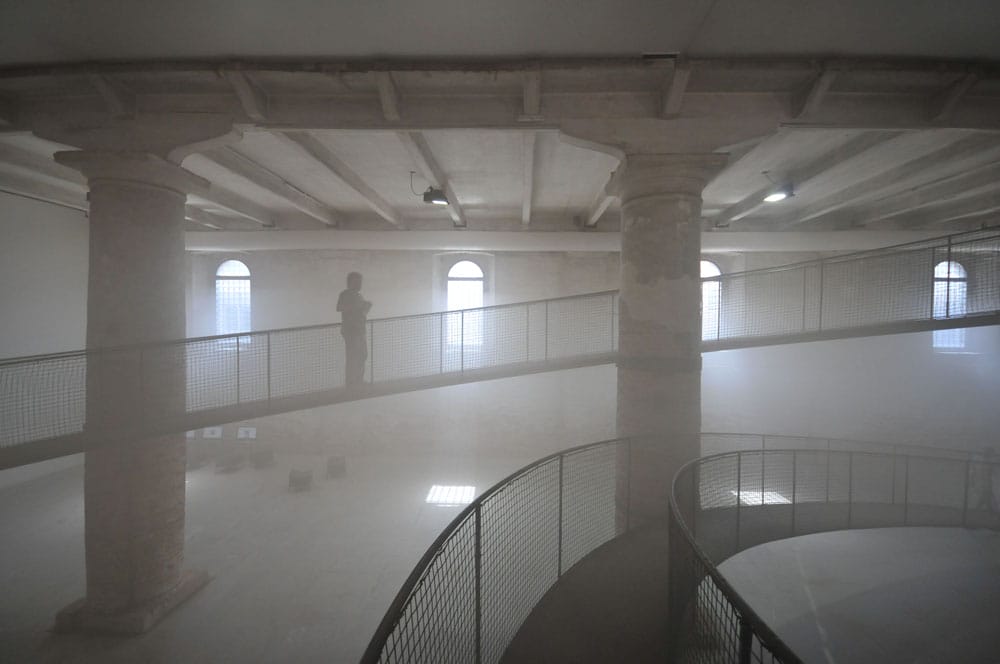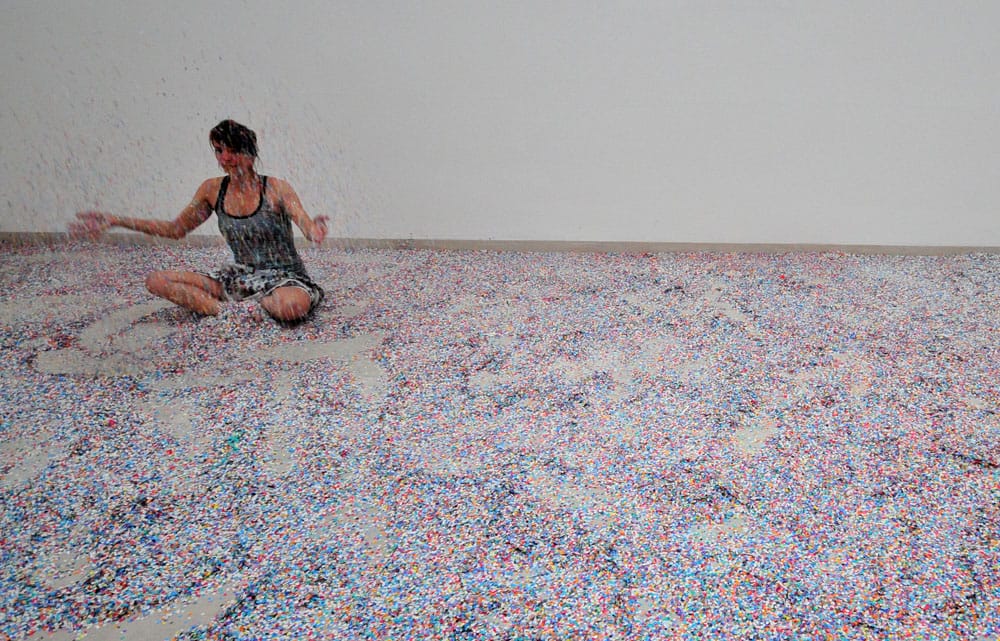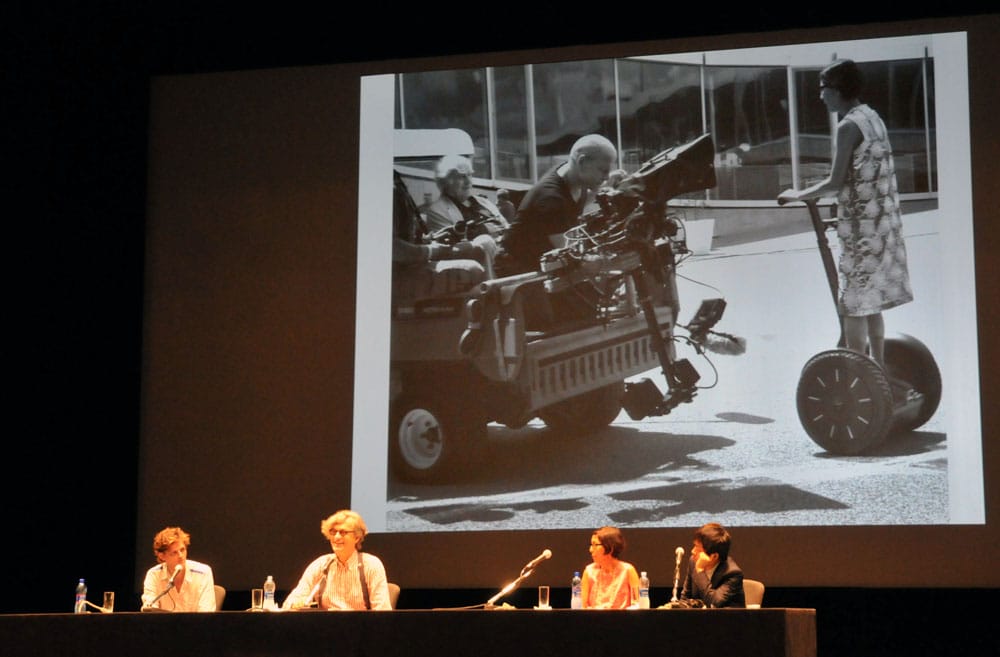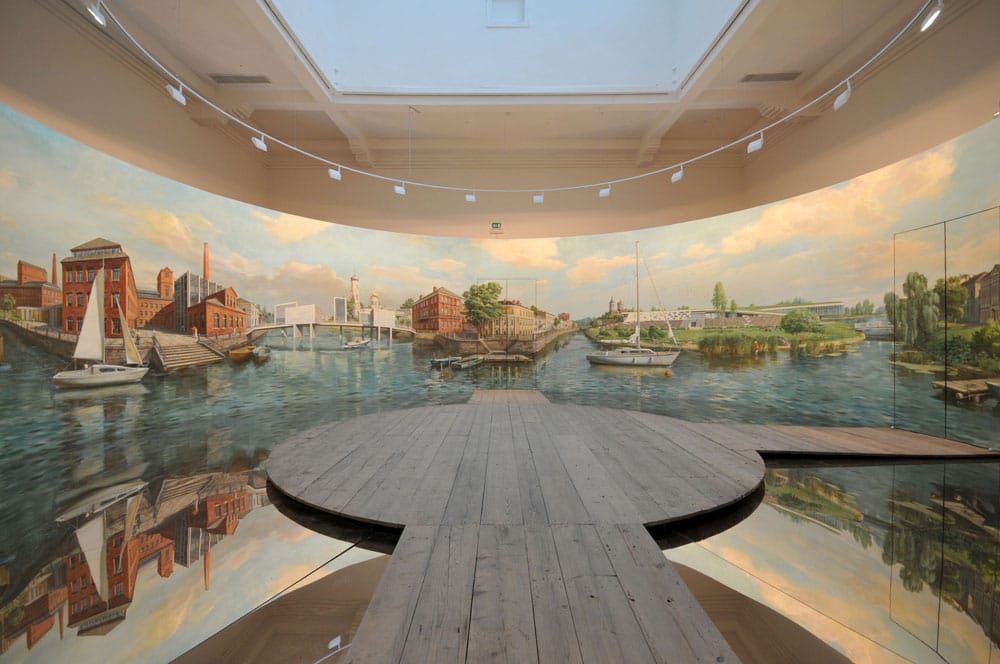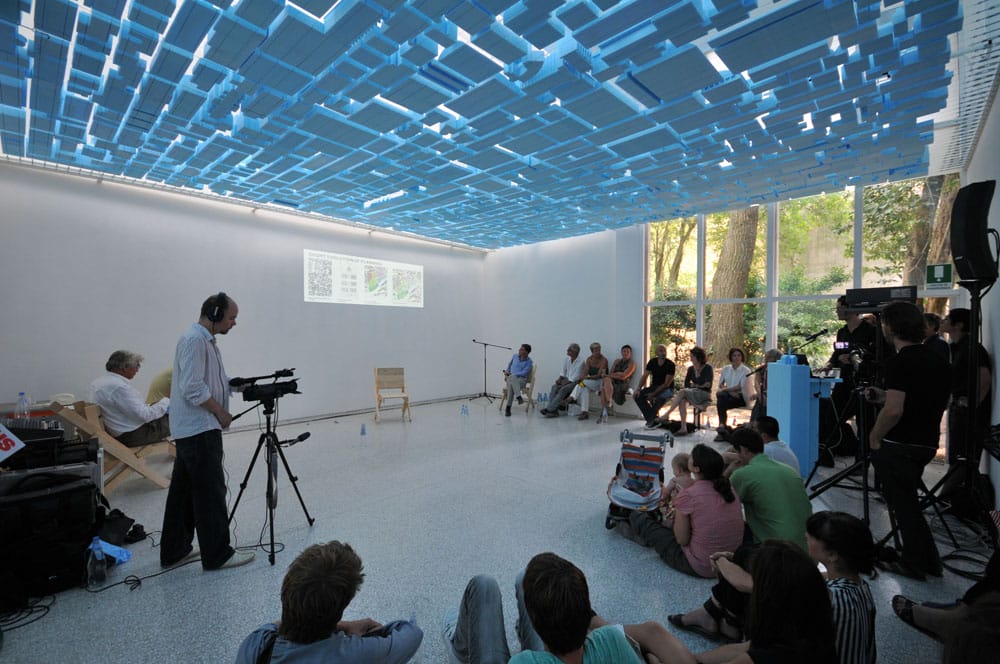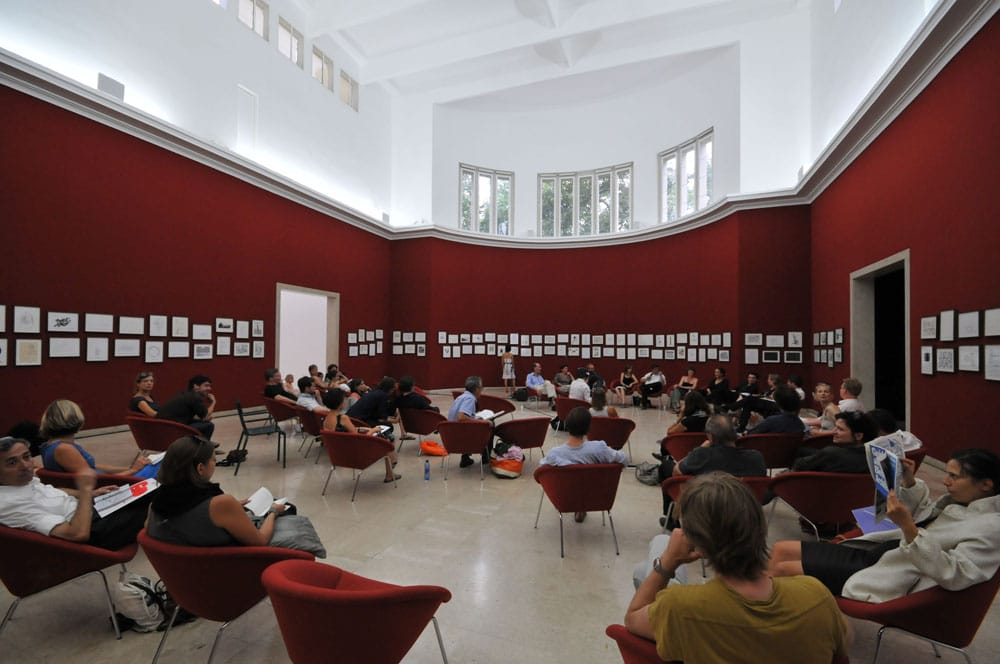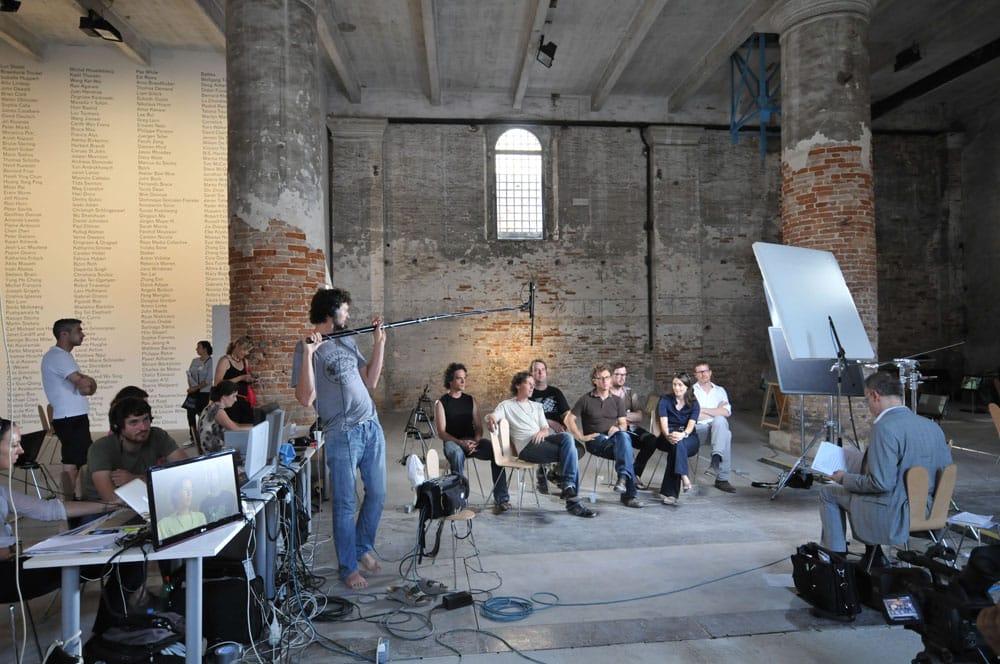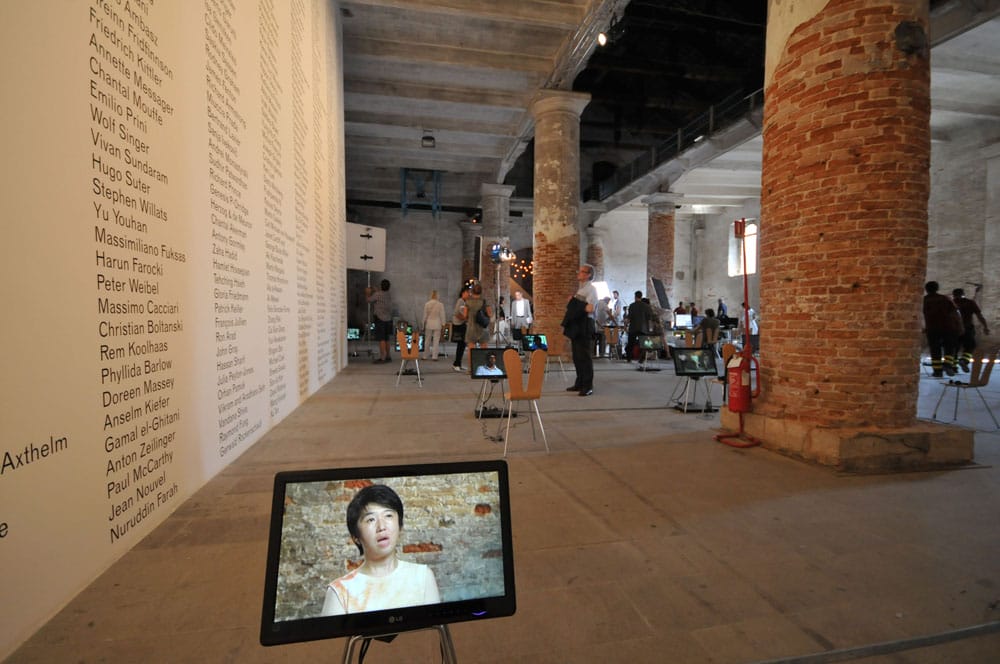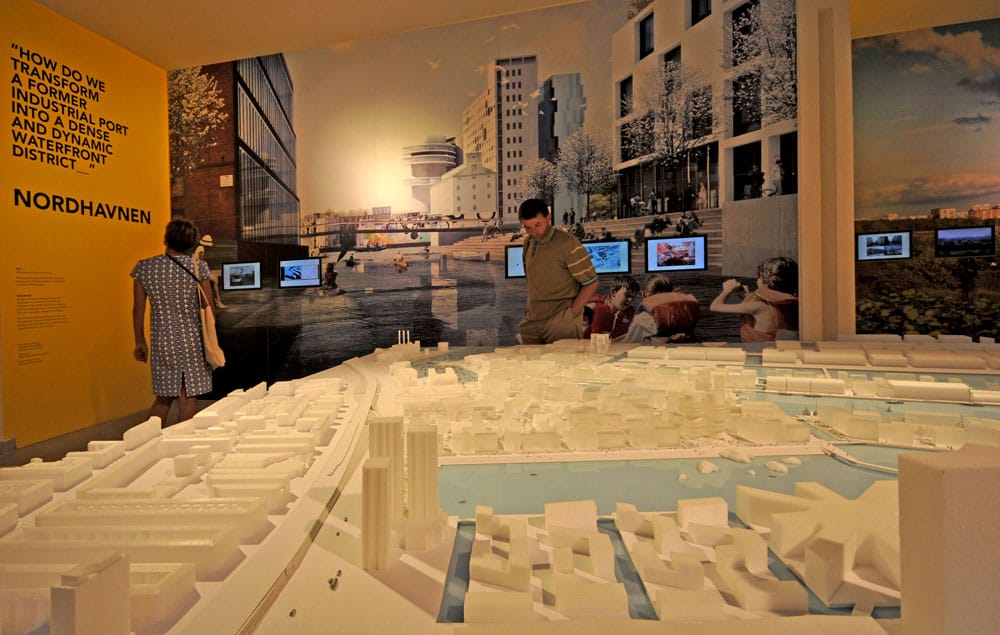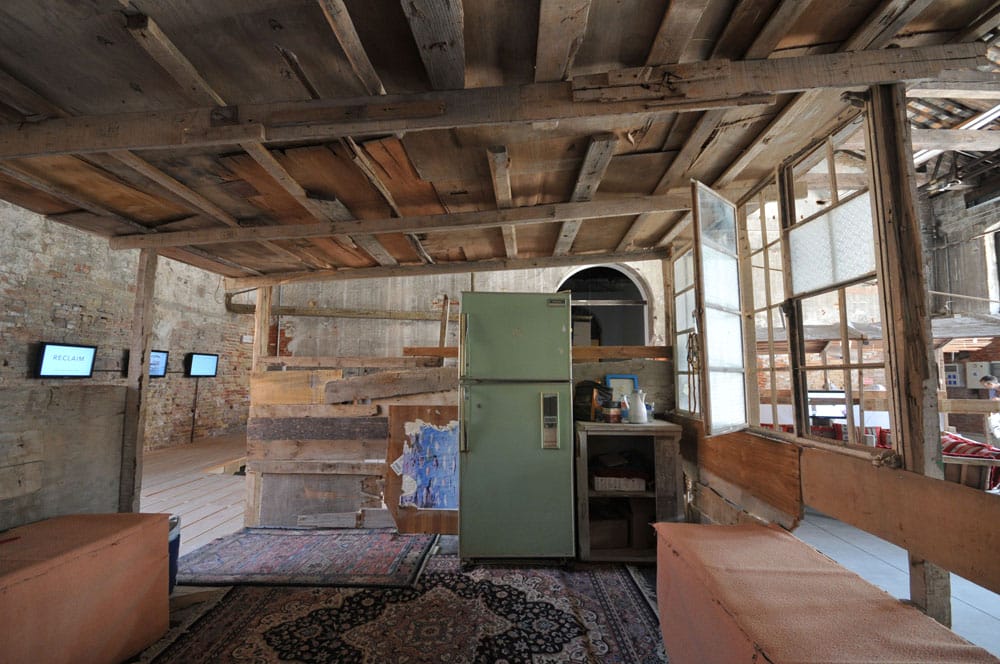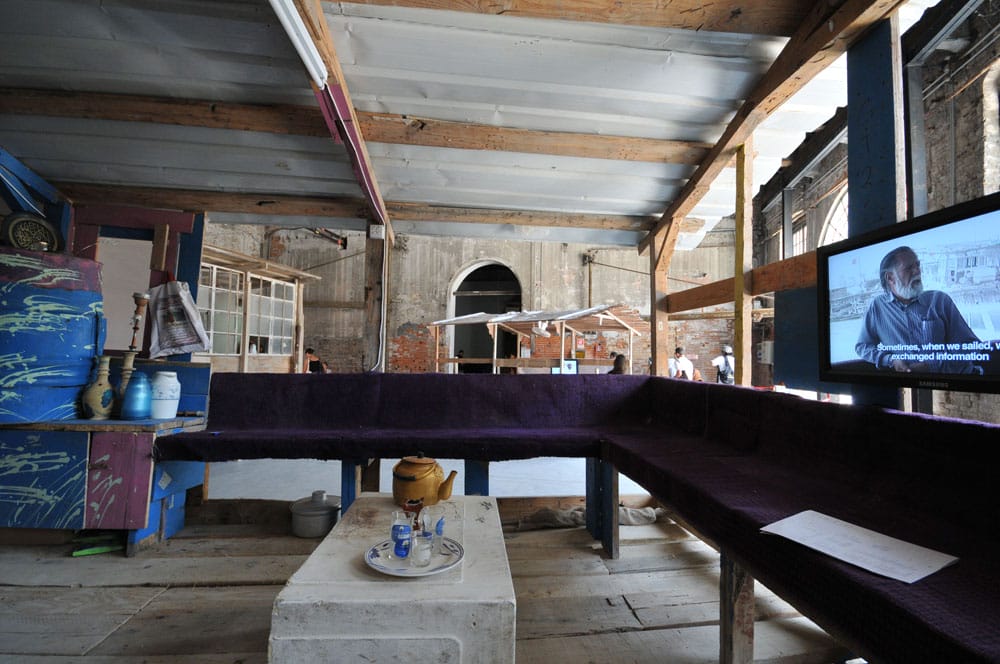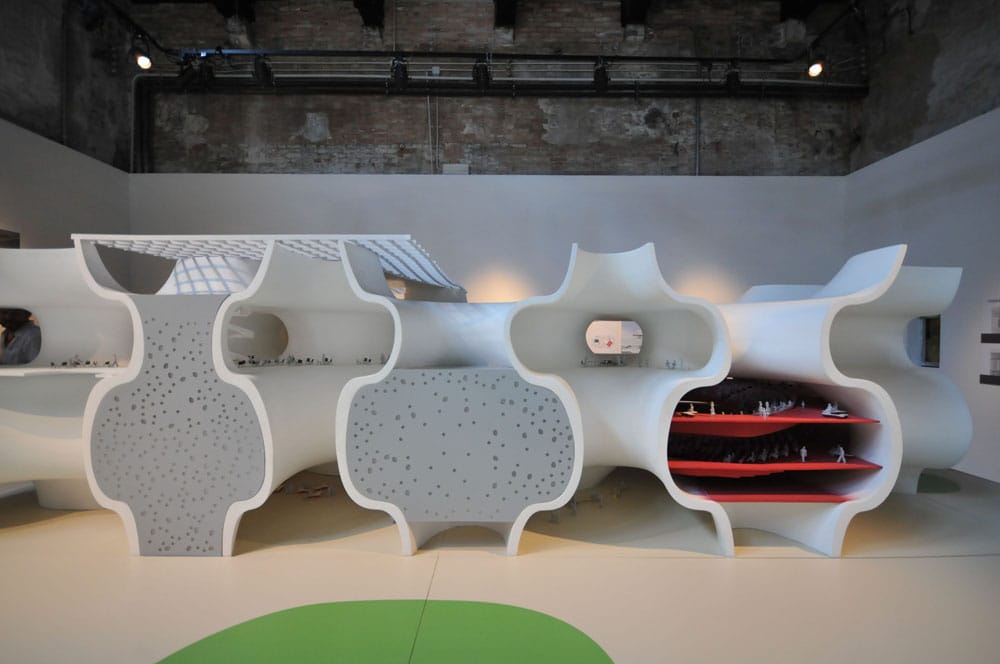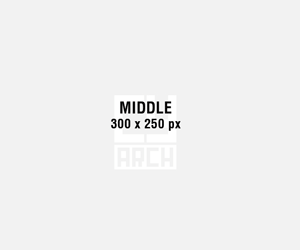ΑΙΣΘΑΝΟΜΕΝΟΙ ΤΗΝ ΑΡΧΙΤΕΚΤΟΝΙΚΗ – Μπιενάλε Αρχιτεκτονικής Βενετίας 2010
του Μάριου Χριστοδουλίδη, Αρχιτέκτονα
Αναδημοσίευση*
SENSING ARCHITECTURE – Venice Architecture Biennale 2010
by Marios Christodoulides, Architect
Republished*
Η σύγκριση μεταξύ του 2008 και του 2010 μοιάζει αναπόφευκτη, αν σκεφτεί κανείς τη φορμαλιστικά ενδιαφέρουσα, αν και επιδεικτική σε κάποιες περιπτώσεις αρχιτεκτονική που είχε εκτεθεί πριν από τρία χρόνια, σε σχέση με τα φαινομενικά γυμνά περίπτερα του περασμένου έτους. Η υπεραφθονία του 2008 – εν μέρει προϊόν ανακύκλωσης της αναβρύουσας ενέργειας της δεκαετίας του ’70 – έχει επισήμως τερματιστεί. Ιδιαίτερο ενδιαφέρον παρουσιάζει και το γεγονός ότι το ουτοπικό και οπτιμιστικό κατασκεύασμα των Coop Himmelblau έχει αντικατασταθεί από το “πραγματικό” σύννεφο των αρχιτεκτόνων Transsolar και Tetsuo Kondo, αποπνικτικό, οπτικά οχληρό και τόσο αντιφατικό όσο μπορεί να μοιάζει ένα λαμπρό μέλλον. Όπως είχε διακηρύξει τρία χρόνια πριν το βελγικό περίπτερο, το πάρτι έχει όντως τελειώσει! Τότε, κανείς δεν μπορούσε να αντιληφθεί πόσο αληθινό ήταν αυτό. Koιτάζοντας πίσω, όμως, κάποιος θα έπρεπε να τους επαινέσει για τη διορατικότητά τους. Εκτός από την ταινία του Sanders με τις αλλόκοτες βόλτες των Sejima και Nishisawa πάνω στα segway μέσα στο κτίριό τους στη Λωζάννη, σε ταχύτητες που έμοιαζαν ιλιγγιώδεις (πολύ καλό κύριε σκηνοθέτη, αλλά τα κτίρια δεν συλλογίζονται φωναχτά!) κανείς άλλος δεν φαινόταν να το απολαμβάνει.
A comparison between 2008 and 2010 appears to be inevitable considering the formally intriguing, even if flamboyant at times architecture on display three years ago to the seemingly stark pavilions on display last year. The exuberance of 2008, most of it recycled from the bubbly seventies, was officially over. Interestingly enough Coop Himmelblau’s visionary and optimistic apparatus has been replaced by a Transsolar’s and Tetsuo Kondo’s Architects ‘real’ cloud, suffocating, visually obtrusive and as contradictory as a bright future might appear. As Belgium’s pavilion proclaimed three years ago the party was indeed over! One could not comprehend how true that was at the time. In retrospect, one can only applaud their vision. Besides Sander’s movie of Sejima and Nishisawa’s uncanny rides on segways through their building in Lausanne at what appeared to be breakneck speeds (very good Mr. director but spare me the building’s loud thinking!) nobody else appeared to be having a jolly good time.
Στη Ρωσία, οι αχανείς, έρημες εκτάσεις εγκαταλειμμένων εργοστασίων σε μικρές πόλεις οι οποίες δεν μπορούν να υποστηρίξουν την προγραμματική ανακύκλωση τέτοιων χώρων – η οποία συνοδεύεται με το ουτοπικό όραμα του τι θα μπορούσαν να απογίνουν – έρχονται σε αντίθεση με το οπτιμιστικό όραμα των Ολλανδών αρχιτεκτόνων στο Gardini και τις επιτυχημένες προσπάθειές τους να αναβιώσουν εγκαταλειμμένα κτίρια εντός των πόλεων τους. Λίγο πιο κάτω, οι Βέλγοι ανακύκλωσαν χρησιμοποιημένα αντικείμενα, ίσως όχι με τη συμβατική λογική, που προβλέπει μια επόμενη χρήση, παρά μόνο με το να τα εκθέσουν. Έτσι ο επισκέπτης δεν μπορεί παρά να ταυτιστεί με τον απόντα χρήστη, αναδεικνύοντας έτσι τη σημασία του ρόλου που αυτός έχει στη δημιουργία ενός βιώσιμου περιβάλλοντος.
In Russia, the vast wastelands of disused factories in small cities that can’t support the programmatic recycling of such spaces, coupled with the utopian vision of what these places could become, comes in contrast to the optimistic vision across the street in the Gardini of Dutch architects and their successful efforts to revive abandoned buildings within the their cities. Further down the street, the Belgians recycled ‘inhabited’ objects, maybe not in the conventional sense where a subsequent useful purpose is anticipated, but just by putting them on display. Thus, one had no choice but to become empathetic with the absent users, signifying the importance of their role in creating a livable environment.
Επιπλέον, οι προγραμματισμένες και μη συζητήσεις γύρω από τη δημιουργία βιώσιμων πόλεων αφθονούσαν. Οι ζωντανές συζητήσεις στο Arsenale, μεταξύ αρχιτεκτόνων και άλλων, γίνονταν μέρος ενός καταγεγραμμένου αρχείου που μπορούσε να μοιραστεί κάθε επισκέπτης, έτσι ώστε μια συζήτηση που ξεκινούσε σε ένα σημείο έπαιρνε αρκετή ώθηση για να συνεχιστεί κάπου αλλού.
Some planned, other not so, conversations about how to make cities livable were in abundance. Continued live conversations in the Arsenale by architects and others became part of a recorded archive to be shared with each visitor so that the conversation that began here could gain enough momentum to be carried somewhere else.
Στο δανέζικο περίπτερο, εντύπωση προκαλεί η συνταγή των BIG για μια «καλύτερη» Κοπεγχάγη, καθώς επιχειρεί να επανεκτιμήσει το finger plan του Rasmussen και να το συμπληρώσει με τη “loop city”, μια προσπάθεια να μεγιστοποιηθεί η συνοχή στη μητροπολιτική περιοχή με τη σύνδεση πολύ διαφορετικών αστικών κόμβων μεταξύ τους. Σε αντιπαράθεση με το ευρωπαϊκό «μεγαλεπήβολο σχέδιο» για την πόλη, η Ιαπωνία εστιάζεται στο “bit city”, όπου μικρά οικόπεδα γης μεταμορφώνονται ανεξάρτητα το ένα από το άλλο , και με ιδιόμορφο τρόπο, με τις ιδέες της μονιμότητας και του πομπώδους να μοιάζουν απατηλές. Μια υπενθύμιση της σημασίας της οικειότητας και του προσωπικού χώρου μέσα σε μια μητρόπολη.
BIG’s recipe for a ‘better’ Copenhagen impresses at the Danish pavilion when it attempts to reevaluate Rasmussen’s finger plan and complement it with the ‘loop city’, an attempt to maximize connectivity in the metropolitan region by stringing together a number of highly differentiated urban nodes. Contradicting the European ‘grand plan’ for the city, Japan narrows in on the ‘bit’ city where small plots of land are transformed independently and at whim with notions of permanence and grandiosity appearing elusive. A reminder of the importance of intimacy and personal space in a metropolitan city.
Αντιλήψεις για το χώρο, όπως και οι ιδέες του πλαισίου, της μνήμης και του νοήματος συνυφαίνονταν καθώς κάποιος περιδιάβαζε στην Arsenale ανάμεσα σε καλύβες ψαρέματος. Αυτές είχαν κυριολεκτικά μεταφερθεί στη Βενετία ως μηχανές του χρόνου και του χώρου από τα ψαροχώρια στο Μπαχρέιν. Αυθόρμητες κατασκευές, απαλλαγμένες από αρχιτεκτονικές προκαταλήψεις, με την τραχύτητά τους να υποδεικνύει τον ψαρά/τεχνίτη που ανταποκρίνεται ταπεινά στο χώρο, το κλίμα και το σκοπό. Βιντεοσκοπημένες συνεντεύξεις “στο χώρο” των καθημερινών τους ασχολιών, μας διαφώτισαν για τη σημασία της διαχρονικής, παράκτιας κουλτούρας του Μπαχρέιν στη ζωή τους, καθώς και για την ανησυχία τους για την ταχέως επερχόμενη παρακμή της. Αυτή ήταν η πρώτη συμμετοχή του Μπαχρέιν στην Biennale και η θαυμαστή απλότητα και σαφήνεια του σκοπού τους βραβεύτηκε με το Χρυσό Λιοντάρι.
Perceptions of space and the ideas of context, memory and meaning were intertwined as one meandered through some fishing shacks in the Arsenale. These were literally transported as time and space machines from the fisherman’s seashore in Bahrain and dropped in Venice. Instinctive contraptions, devoid of any architect’s touch, their roughness indicative of the fisherman-turned-craftsman’s humble response to site, climate and purpose. Videoed interviews ‘on site’ of their daily inhabitants enlightened us of the importance of Bahrain’s transcending coastal culture in their lives and their concern for its fast approaching decline. This was Bahrain’s first participation at the Biennale and their admired simplicity and clarity of purpose was awarded with the Golden lion.
Νερό, οσμές, μουσική, καπνός, φως, σκοτάδι, ομιλία, ακρόαση, αφή, αίσθηση, μνήμη, νόημα, ήταν όλα παρόντα στη Βενετία, τόσο συσχετισμένα το ένα με το άλλο, όσο και ανεξάρτητα. Η πρώτη Biennale με γυναίκα επιμελήτρια έμοιαζε με μια ταπεινή προσπάθεια που καλούσε όλες τις αισθήσεις να συμμετάσχουν στον ορισμό του τόπου. Απλά έπρεπε κάποιος να κοιτάξει πιο προσεκτικά.
Water, smell, music, smoke, light, darkness, speech, hearing, touch, feel, memory, meaning were all present in Venice, both in conjunction and alone. The first Biennale with a female curator seemed to be a humble endeavor, inviting all the senses to participate in the definition of place(20). You just had to look more carefully.
* Προηγούμενες Δημοσιεύσεις : Περιοδικό ΑΡΧΕΙΟ, Τεύχος 9
* Previous Publications: ΑΡΧΕΙΟ Magazine, Issue 9



